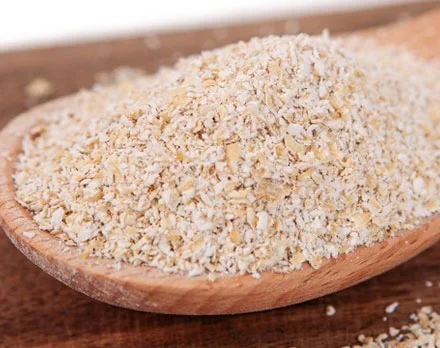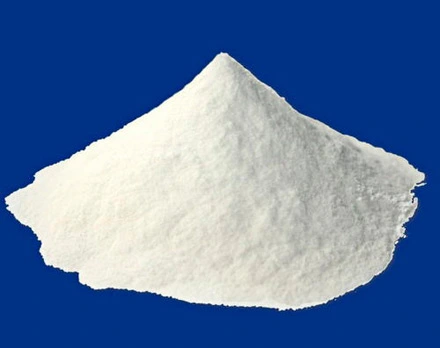“Golden prebiotic”—Galactooligosaccharide
Galactooligosaccharides (GOS) is an important prebiotic in breast milk, and its safety has been widely recognized. China has included it in the new resource food catalog in September 2008. It is made from lactose as raw material and obtained through the action of β-galactosidase. It is an oligosaccharide mixture in which galactose molecules are connected to the galactose group in lactose molecules.
Galacto-oligosaccharide has extremely strong heat resistance and acid resistance, and can effectively proliferate two kinds of beneficial bacteria (Bifidobacterium and Lactobacillus) in the human body at the same time. It is an excellent bifid factor. Galacto-oligosaccharide is the only one that exists in breast milk and can be used by eight beneficial bacteria in the human intestine at the same time. It has gained the reputation of "golden prebiotic".
Since the enzymes that hydrolyze oligosaccharides are not present in the human body, they cannot be digested, so galacto-oligosaccharides produce less energy and heat in the human body. After entering the human body, they selectively proliferate the beneficial bacteria in the intestine (Bifidobacterium, etc.) without causing blood sugar to rise. At the same time, they prevent dental caries, maintain intestinal health, treat constipation, and promote the absorption of nutrients such as vitamins and minerals. It can also play a certain role in lowering serum cholesterol, enhancing the body's immunity, resisting tumors, losing weight, and preventing intestinal cancer.
Maintain intestinal health.
Functional sugars can proliferate beneficial bacteria such as Bifidobacterium and Lactobacillus and inhibit the growth of harmful bacteria such as Clostridium perfringens, Enterococcus and Bacteroidetes. Long-term use will make beneficial bacteria become the dominant flora in the intestinal tract, thus exerting their potential function of regulating intestinal. After ingesting functional sugars, the number of bifidobacteria in the intestines increases significantly, the pH value decreases, and the intestines maintain an acidic environment. Since the acidic environment is not suitable for the growth of harmful bacteria, GOS also inhibits the reproduction of pathogens through this indirect method, reducing the number of putrefactive bacteria such as Clostridium and achieving the purpose of maintaining intestinal health.
Maintain human cardiovascular health.
The intestine is the largest "organs carrying toxins" in the human body and also the largest detoxification organ. If toxins cannot be eliminated in time, they will be reabsorbed in the colon and enter the blood, harming human health. The acidic environment in the intestine formed by galactooligosaccharide will promote intestinal peristalsis and promote the excretion of harmful substances in the intestine. It can not only inhibit harmful bacteria and reduce the production of toxins by increasing the number of beneficial bacteria, can also use its own water-retaining properties to prevent constipation and form a barrier on the intestinal wall to prevent toxins from being absorbed into the bloodstream, thereby maintaining cardiovascular health.
Improve serum lipids.
A large number of studies have shown that serum cholesterol levels can be reduced after ingesting galacto-oligosaccharide. Daily intake of 6~12g GOS for 2 weeks to 3 months can reduce total cholesterol by 20~50dl. Lactic acid including Bifidobacterium Both Bacillus and its fermented dairy products can reduce total serum cholesterol levels and increase the ratio of high-density lipoprotein cholesterol in human serum.
Enhance human immunity.
The intestinal immune system and intestinal flora have co-evolved. The intestinal flora plays a very important role in intestinal immunity. The ecological balance of the intestinal flora is an important factor in maintaining normal digestive function and preventing the occurrence of diseases. Intestinal flora imbalance can not only reduce the body's specific immune function, but also reduce non-specific immune function. When GOS promotes the proliferation of beneficial bacteria in the intestine, it not only participates in the regulation of human immunity, but also produces fermentation products mainly H2, CO2, short-chain fatty acids, branched-chain fatty acids, etc. Among them, short-chain fatty acids (acetic acid, propionic acid, butyric acid, etc.) are also energy sources for colon cells, liver cells, and surrounding tissues.
-
Inulin
-
Polydextrose
-
Resistant Dextrin
- Trehalose
- Resistant Dextrin(Soluble Corn Fiber)
- Resistant Dextrin(Soluble Corn Fiber)(Powder)
- Resistant Dextrin(Soluble Tapioca Fiber)(Powder)
- Resistant Dextrin(Soluble Tapioca Fiber)(Liquid)
- Resistant Maltodextrin Powder
- Resistant Maltodextrin Powder (Liquid)
- Organic Resistant Dextrin Powder (Corn Type) 70%
- Organic Resistant Dextrin Powder (Corn Type) 90%
- Organic Resistant Dextrin Powder (Tapioca Type) 70%
- Organic Resistant Dextrin Powder (Tapioca Type) 90%
- Organic Resistant Dextrin Syrup (Corn Type) 70%
- Organic Resistant Dextrin Syrup (Corn Type) 90%
- Organic Resistant Dextrin Syrup (Tapioca Type) 70%
- Organic Resistant Dextrin Syrup (Tapioca Type) 90%
- Organic Resistant Maltodextrin Powder (Corn Type) 70%
- Organic Resistant Maltodextrin Powder (Tapioca Type) 70%
- Organic Resistant Maltodextrin Syrup (Corn Type) 70%
- Organic Resistant Maltodextrin Syrup (Tapioca Type) 70%
- Organic Soluble Corn Fiber Powder 70%
- Organic Soluble Corn Fiber Powder 90%
- Organic Soluble Corn Fiber Syrup 70%
- Organic Soluble Corn Fiber Syrup 90%
- Organic Soluble Tapioca Fiber Powder 70%
- Organic Soluble Tapioca Fiber Powder 90%
- Organic Soluble Tapioca Fiber Syrup 70%
- Organic Soluble Tapioca Fiber Syrup 90%
- Resistant Dextrin Powder (Corn Type) 70%
- Resistant Dextrin Powder (Corn Type) 90%
- Resistant Dextrin Powder (Tapioca Type) 70%
- Resistant Dextrin Powder (Tapioca Type) 90%
- Resistant Dextrin Syrup (Corn Type) 70%
- Resistant Dextrin Syrup (Corn Type) 90%
- Resistant Dextrin Syrup (Tapioca Type) 70%
- Resistant Dextrin Syrup (Tapioca Type) 90%
- Resistant Maltodextrin Powder (Corn Type) 90%
- Resistant Maltodextrin Powder (Tapioca Type) 90%
- Resistant Maltodextrin Syrup (Corn Type) 90%
- Resistant Maltodextrin Syrup (Tapioca Type) 90%
- Soluble Corn Fiber Powder 70%
- Soluble Corn Fiber Powder 90%
- Soluble Corn Fiber Syrup 70%
- Soluble Corn Fiber Syrup 90%
- Soluble Tapioca Fiber Powder 70%
- Soluble Tapioca Fiber Powder 90%
- Soluble Tapioca Fiber Syrup 70%
- Soluble Tapioca Fiber Syrup 90%
-
Dioscorea Opposita Dietary Fiber
-
Wheat Dietary Fiber
-
Oat Dietary Fiber
-
Polydextrose Powder (Conventional Type)
-
Polydextrose Powder (Special Type)
-
Polydextrose Powder (Sugar Free Type)
-
Polydextrose Powder (Type II)
-
Polydextrose Powder (Type III)
-
Polydextrose Syrup (Conventional Type)
-
Polydextrose Syrup (Refined Type)
-
Polydextrose Syrup (Special Type)
-
Polydextrose Syrup (Standard Type)
-
Polydextrose Syrup (Sugar Free Type)
- Fructo Oligosaccharide
-
Malt Oligosaccharide
- Isomalto-oligosaccharide 900 Powder
- Isomalto-oligosaccharide 900 Powder(Corn)
- Isomalto-oligosaccharide 900 Powder(Tapioca)
- Isomalto-oligosaccharide 900 Syrup
- Isomalto-oligosaccharide 900 Syrup(Tapioca)
- Isomalto-oligosaccharide 900 Liquid (Corn)
- Isomalto-oligosaccharide 900 Liquid (DP3)
- Isomalto-oligosaccharide 900 Liquid (Tapioca)
- Isomalto-oligosaccharide 900 Powder (Corn)
- Isomalto-oligosaccharide 900 Powder (DP3)
- Isomalto-oligosaccharide 900 Powder (Tapioca)
- Organic Isomalto-oligosaccharide 900 Liquid (Corn)
- Organic Isomalto-oligosaccharide 900 Liquid (DP3)
- Organic Isomalto-oligosaccharide 900 Liquid (Tapioca)
- Organic Isomalto-oligosaccharide 900 Powder (Corn)
- Organic Isomalto-oligosaccharide 900 Powder (DP3)
- Organic Isomalto-oligosaccharide 900 Powder (Tapioca)
- Xylo-oligosaccharide
- Galacto-oligosaccharide
-
Mannan Oligosaccharide
-
Isomaltulose Powder
-
Saigao Stachyose






